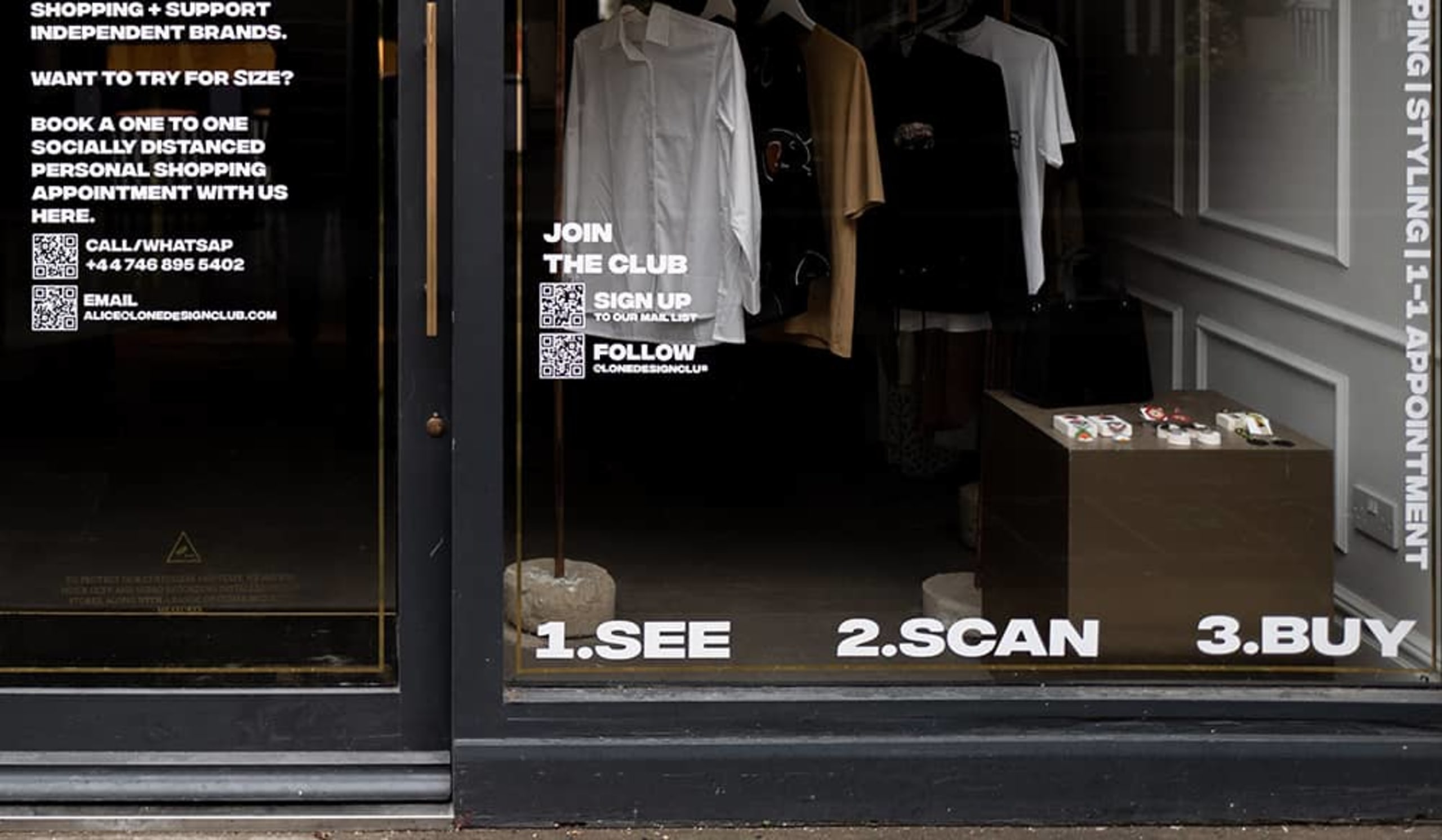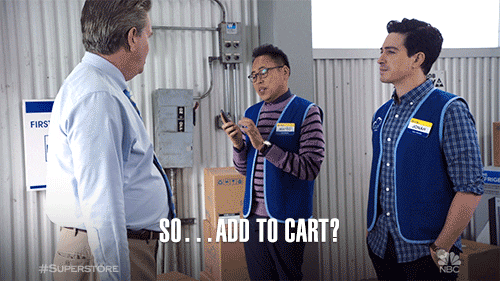
The disadvantages of e-commerce
Photo by the blowup on Unsplash.
Let’s start with a promise: this isn’t another clickbait-filled hot take claiming the “death” of any extremely useful platform. There is no shame in embracing ecommerce and retail like the loved ones they should be for marketers now or in the (yeah, I said it) distant future. As a digitalist, I’m here for you, retail. We are friends because retail and ecommerce are meant for each other. And, we’ll outline exactly why this relationship has reciprocal value below by highlighting the limitations of online shopping while also getting a little nostalgic about the shopping environments that took a beat while we distanced ourselves from all sensory experiences.
Oof. That hurts to write, but the emotion is real. And, it’s important to note retail is all about a feeling. So, let’s embrace all the feels as we walk through a handful of challenges and future opportunities for ecommerce counterbalanced by the joys of a cleanup on aisle 4.

1. It doesn’t make senses
Have you ever bought a candle on Amazon? Why? Seriously, why? Did you already purchase this exact candle and know how it smells? Did you simply think all “cinnamon” is “cinnamon-y”?
On the contrary, have you ever bought a sweater simply because you wanted to rub its fabric in your face so much you didn’t care if a Target full of strangers saw you do it? Oh, the wonderful smells, touches, sounds, sights and even tastes of retail. It’s not just shopping with your eyes. It’s shopping with your whole human. It’s not a two-day wait for your shopping cart full of description- and review-biased guesses. It’s instant gratification. It’s immersion. It’s slow. It’s the original browser. And, it’s really, really good for branding because senses are memories.
The opportunity
Completion of real-life cart abandonment. You can't recreate the full sensory experience online, but you can bring back the memories of those feelings after a shopping trip to seal the deal.
Let's explain.
We’ve all really loved an item in a store and put it back on the shelf for whatever reason. Maybe you couldn’t justify the cost at the moment. Maybe the checkout line was too long. This buyer hesitation at retail can be eased at a later date by the efficiency and cost-savings of ecommerce.
That’s where the advancements and adoption of NFC could have a future play in connecting retail to ecommerce.
Imagine you’re walking through and periodically hovering in aisles at your favorite retailer. There is proximity tracking throughout the store that creates a "browser history." Based on purchase history and your activity of your last shopping trip, the retailer app follows up with offers on items you were most likely considering but didn’t purchase.
As long as retailers maintain the balance of benefit to the brand and benefit to the consumer, this smart personal shopper will be a welcomed innovation for all.
2. Trial and error and error and error
OK. There is no removing the trial and error process at retail or via ecommerce. While AR is inching closer and closer to a virtual fitting room, it’s not there yet. And, even as true-to-size accuracy improves, it’s still – as outlined above – a barrier to your sense of taste, smell or touch.
There is one key difference that causes the most challenges of online shopping: trial at retail is in real time.
The more delayed feedback loop of ecommerce leads to increases in shipping, restocking and environmental costs. These costs add up so quickly that many online retailers would rather let you keep an item you don’t want than go through the long, costly process of sending it back. Big-box retailers can afford to absorb this customer service at scale, but boutique shops often have to pass these costs back to the consumer, leading to extreme buyer’s remorse when you’ve been charged for services and have nothing to show for it.
The opportunity
Ecommerce does have one massive advantage over retail that should be highlighted more at point of sale: inventory. Retailers typically don’t have the space to offer every common and specialty size on-shelf. Ecommerce, on the other hand, can connect all inventory between store locations and a central warehouse. Providing a gentle reminder (like a QR code with a CTA to "find your size") that you can check ALL inventory online when you find something you love but don’t find the right fit is something that isn’t leveraged nearly as much as it should be.

3. Shopping with influencers
Remember influencers? No, not those influencers. We’re talking about the original shopping advisors – your friends, family and floor salespeople. Retail has a natural community and benefits from word of mouth at purchase.
Ecommerce is a relatively isolated experience. It relies on several other digital channels like social media and online video reviews to create a community of voices to amplify buyer confidence. This digital ecosystem can be costly and time consuming to maintain and isn’t comparable to live, in-person feedback and sharing. In other words, it’s really hard to beat “you look amazing!” when you are making your final purchasing decisions.
The opportunity
Ecommerce does have the ability to increase community for free. The checkout and feedback flows are ideal times to suggest your customers share their affinity for a purchase with family and friends. It’s a relatively simple UX addition that is overlooked far too often. It’s important to note that adding this function after the purchase has been made is critical to ensure customers don’t wander off and get lost in their feeds leading to the dreaded cart abandonment.
4. Conversion aversion
If ecommerce was an actual salesperson, we’d likely find him or her to be the most obnoxiously aggressive and dull personality on the floor. That’s because the obsession with click-through and conversion rates has created a massive network of drab, brand-less experiences spanning the internet and creating a negative ecommerce impact for consumers. Entertainment and nuance are seen as mere distractions and flow friction. These sanitary environments have your audience feeling pressure or nothing at all.
Retail is full of distractions, often on purpose. And, there is a good reason for it. Brand building is the long game that ecommerce often ignores, but it is fully embraced on the shopping-room floor.
The opportunity
This one is pretty straightforward, but critical. The way you speak, look and feel should remain consistent regardless of the platform or speed of transaction. And, yes, entertainment generates human connection that is shareable and has a very real place in ecommerce. Let’s make the internet wonderful again.
5. The world isn’t virtual, yet
The world is tangible and much closer to retail environment than an online shop. Every single space, whether it’s a store or a hotel room, is a potential interaction that leads to the desire to buy.
This is perhaps one of the biggest disadvantages of online shopping AND retail but the biggest future opportunity for ecommerce.
Let’s explain.
Have you ever laid on a bed in a hotel and immediately wanted to buy the sheets, the mattress and the frame? Have you ever been to a hotel that offers a menu for you to make this exact purchase? It’s a brilliant marketing move. Capturing your audience in a passionate moment and offering instant gratification is an online retailer’s dream.
The opportunity
What if you could shop in real life?
Let’s explain.
Imagine you are walking by your neighbor’s house and see a flower and a garden gnome you must have for your own yard. What if you could scan the flower and the gnome and instantly be able to purchase these exact items from your phone at that moment?
Although this tech isn’t readily available now, we believe it will be in the near future, and marketers should start planning for it.

Wrapping it up
Retail and ecommerce benefit from each other greatly. They both offer very different yet complementary experiences that meet consumers in unique need states. With that said, retail still owns 92% of all purchases for many reasons including those listed above, and consumers have made it clear why they still prefer going to a store.
Online shopping problems and solutions
If marketers wish to continue to tear down this barrier, they must first accept the challenges of shopping online and resolve them by improving the connection between their offline and online presence or by making ecommerce a little more human.
Drop us a line if you’re curious for more information on user experience and ecommerce, or check out our related services.
)
)